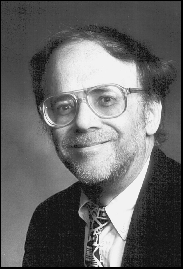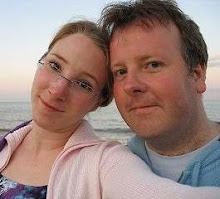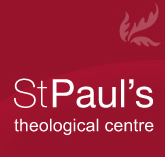
The alleged ‘Jesus family tomb’
As I understand it (I have not yet seen the film itself) the Discovery Channel programme “The Lost Tomb of Jesus” claims that a tomb discovered in the Talpiot area of Jerusalem in 1980, containing ten ossuaries, is the tomb of Jesus’ family and contains some of the remains of Jesus himself. If my memory serves me correctly the same claim was made in a British television programme, fronted by Joan Bakewell, just a few years ago. However the Discovery Channel programme claims to have new evidence and arguments.
The basic arguments concerning the names on the ossuaries seem to be two (1) The names, including ‘Jesus son of Joseph,’ ‘Judah son of Jesus,’ Yose, Mary and Matthew, are the names of key figures in the New Testament Gospels. Some statistical arguments are alleged to show that the odds are hugely in favour of the view that the names on the ossuaries in fact refer to the figures known from the New Testament. (2) The form of the name Mary (in Greek) is the distinctive Mariamenou. This, it is claimed, is the same form of the name as Mariamne, which is the name of the sister of the apostle Philip in the fourth-century Acts of Philip, presumed to be Mary Magdalene.
I wish to stress at the start that the issues raised by this proposal are complex and difficult. My first reactions to what I was told about it by journalists were too little considered and I had not then had time to track down all the relevant evidence and study it carefully. So I made some mistakes. (I recommend that no one pronounce on this matter without having the relevant pages of Rahmani’s catalogue of ossuaries actually in front of them. My initial lack of access to them misled led me at some points, even though I was told quite carefully what they contain. They can now be seen on the Discovery Channel website.) I am fairly confident of what I’m now saying here, but ossuaries and onomastics are technical fields, and I’m open to corrections from the experts. I’ve no doubt that refinements of the argument will result from further discussion of the issues.
I shall divide my discussion into the matter of the names on these ossuaries in general, and a longer consideration of the name alleged to be Mary Magdalene, since this requires quite careful and detailed consideration. (I have refrained from using Hebrew and Greek script, and have tried to make the argument intelligible to people who know no Greek. Unfortunately at the moment I don’t have a functioning transliteration font: hence the overly simply transliteration of the names that I’ve had to use.)
The names in general
The six persons named in the ossuary inscriptions (Rahmani 701-706) are:
(1) Mariamenou-Mara (the first name is a unique form of the name Mariam, Mary, and will be discussed separately below).
(2) Yehuda bar Yeshua (Judah son of Jesus)
(3) Matia (Matthew)
(4) Yeshua bar Yehosef (Jesus son of Joseph)
(5) Yose (a common abbreviated form of Yehosef)
(6) Maria (a form of Mariam, Mary)
All the inscriptions are in Aramaic except the first, which is Greek.
We should note that the surviving six names are only six of many more who were buried in this family tomb. There may have been as many as 35. The six people whose names we have could have belonged to as many as four different generations. This is a large family tomb, which would certainly have been used for quite some time by the same family. We should not imagine a small family group. Some members of the family of Jesus we know lived in Jerusalem for only three decades (from the death of Jesus to the execution of his brother James in 62). None of our other evidence would suggest that there were so many of them as to require a tomb of this size.
Only three of the six named persons correspond to the names of known members of the family of Jesus: Jesus son of Joseph, Maria (Jesus’ mother or his aunt, the wife of Clopas), Yose (Jesus’ brother was known by this abbreviated form of the name Joseph: Mark 6:3). In a family tomb only members of the family (members by birth or, mostly in the case of women, marriage) would be interred. The fact that one of Jesus’ close disciples was named Matthew has no significance at all for identifying the person in the ossuary labelled Matthew. We shall discuss Mariamenou-Mara below, but it cannot be stressed sufficiently that there is no evidence at all for the conjecture that Jesus married Mary Magdalene (and note that an extra-marital affair, which some postulate, though again without evidence, would not qualify Mary Magdalene to be in the tomb of Jesus’ family). Similarly, there is no evidence at all that Jesus had any children. (If he really had a son named Judah, would he not be mentioned somewhere in the ancient literary evidence? He would have been a useful figure for a Gnostic wishing to claim esoteric teaching of Jesus handed down from someone close to him, but he goes unmentioned in the Gnostic Gospels that do make such claims for other figures and unmentioned also in the church fathers who relay information about Gnostic claims.)
All of the names on these ossuaries were extremely common names among Jews in Palestine at this period. We have a great deal evidence about this (the data is collected in the enormously useful reference book: Tal Ilan, Lexicon of Jewish Names in Late Antiquity, part 1 [Mohr-Siebeck, 2002], and also analysed in chapter 4 of my recent book Jesus and the Eyewitnesses [Eerdmans, 2006]). We have a data base of about 3000 named persons (2625 men, 328 women, excluding fictional characters). Of the 2625 men, the name Joseph (including Yose, the abbreviated form) was borne by 218 or 8.3%. (It is the second most popular Jewish male name, after Simon/Simeon.) The name Judah was borne by 164 or 6.2%. The name Jesus was borne by 99 or 3.4%. The name Matthew (in several forms) was borne by 62 or 2.4 %. Of the 328 named women (women’s names were much less often recorded than men’s), a staggering 70 or 21.4% were called Mary (Mariam, Maria, Mariame, Mariamme). (My figures differ very slightly from Ilan’s because I differ from a few of her judgments for technical reasons, but the difference is insignificant for present purposes.)
I am not a mathematician and do not know how to get from these figures to calculations of odds. I must leave the assessment of Feuerverger’s case to others. But it seems to me incredible.
The name Mariamenou-Mara
The Hebrew name Mariam was very popular among Palestinian Jews at this period, though hardly used at all in the diaspora. It was usually rendered in Greek in one of two forms: Maria and Mariamme (or Mariame). It could, of course, be simply written as Mariam in Greek characters (and this is the practice of the Septuagint, the Greek Old Testament, when referring to Mariam the sister of Moses, called Miriam in English Bibles). But we know only four cases in which this was done with reference to a living person of the early Jewish period. (One of these is Luke 10:39-42, referring to Mary the sister of Martha, though there is a variant reading Maria).
Much more popular were the forms Maria (the form used everywhere in the New Testament, except Luke 10:39-40, for all the various Maries it refers to) and Mariamme/Mariame (used, for example, by Josephus). Both give the name a more Greek form than the simple transliteration Mariam. Palestinian Jewish women who themselves used a Greek form of their name as well as a Semitic form (a common practice) would be likely to have used Maria or Mariamme. This accounts for the fact that the Greek form Maria is often found on ossuaries transliterated back into Hebrew characters as Mariah. (Odd as this practice might seem, there are examples for other names too.) This is what has happened in the case of the woman called Maria (in Hebrew characters) on one of the ossuaries we are studying.
It is worth noting that this Greek form of the name Miriam has nothing to do with the Latin name Maria, which also existed. The coincidence is just a coincidence. It was, however, a coincidence that Jews living in a Latin-speaking environment could have exploited, just as Jews in Palestine exploited the coincidental near-identity of the Hebrew name Simeon and the Greek name Simon. The woman called Maria in Romans 16:6, a member of the Christian community in Rome, may have been a Jew called Mariam in Hebrew (an emigrant from Palestine), or a Gentile with the Latin name Maria, or a Jew living in Rome who had the name Maria precisely because it could be understood as both Hebrew and Latin.
In the Gospels Mary Magdalene’s name is always given in the Greek form Maria, which is the New Testament’s standard practice for rendering Mariam into Greek, except for Luke 10:39-42. As we have noted it is standard Greek form of Mariam. However, from probably the mid-second century onwards we find some references to Mary Magdalene (often identified with Mary of Bethany and/or other Gospel Maries) that use the alternative standard Greek form Mariamme (or Mariame). These references are all either in Gnostic works (using ‘Gnostic’ fairly loosely) or in writers referring to Gnostic usage.
We find the form Mariamme in Celsus, the second-century pagan critic of Christianity, who lists Christian sectarian groups, including some who follow Mary (apo Mariammes). These may well be the group who used the Gospel of Mary (late 2nd century?), a Greek fragment of which calls Mary Magdalene Mariamme. This form of her name also appears in the Coptic (a translation from Greek) of the Gnostic Work the Sophia of Jesus Christ (CG III,4). The usage may have been more widespread in Gnostic literature, but the fact that we have most Gnostic works only in Coptic makes it hard to tell.)
This tradition of using the form Mariamme for Mary Magdalene must have been an alternative tradition of rendering her name in Greek. It most likely goes back to a usage within the orbit of Jewish Palestine (since the name Mary in any form was very rare in the diaspora and Gentile Christians would not be familiar with the name Mariamme ordinarily). But so does the usage of Maria in the New Testament Gospels, at least one of which is at least a century earlier than any evidence we have for giving her the name Mariamme. It would be hazardous to suppose that Mariamme was the Greek form of her name use by Mary Magdalene herself or the earliest disciples of Jesus.
The Gnostic use of Mariamme is also reported by Hioppolytus in his Refutation of All Heresies (written between 228 and 233). He says that the Naassenes claimed to have a secret teaching that James the brother of Jesus had transmitted to Mary (5.7.1; 10.9.3). What is especially significant is that the manuscript evidence is divided between two forms of the name: Mariamme and Mariamne (note the ‘n’!). It is probably impossible to tell which Hippolytus himself wrote. However, it is easy to see that, in a milieu where the name Mariamme was not otherwise known, the usage could slip from Mariamme to Mariamne.
These variant readings in Hippolytus are the first known occurrences of the form Mariamne (which the Discovery Channel programme claims is the same name as that on one of the ossuaries). Since it occurs in Hippolytus as a variant of Mariamme, and since the latter is well attested in Jewish usage back to the first century CE, it seems clear that the form Mariamne is not really an independent version of the name Mariam (independent of Mariamme, that is). But a late deformation of the form Mariamme, a deformation made by Greek speakers not familiar with the name. This must also then explain the usage in the apocryphal Acts of Philip (late 4th or early 5th century), where Mariamne is consistently and frequently used for the sister of the apostle Philip, apparently identified with both Mary Magdalene and Mary of Bethany.
We can now turn to the inscription on the ossuary, which has, in Greek: MARIAMENOUMARA. The two words Mariamenou and Mara are written consecutively with no space between. This makes it rather unlikely that two women are named here. But Rahmani takes a small stroke between the last letter of Mariamenou and the first of Mara to be a Greek letter eta (long e). He takes this to be the relative pronoun he (eta with a rough breathing), reading: ‘Mariamnenou who [is also called] Mara.’ (Note that this is different, it seems, from what the Discovery Channel do when they read the eta with a smooth breathing, meaning ‘or’.) There are parallels (I gather from Rahmani) to this abbreviated way of indicating two names for the same person.
The form of the name on the ossuary in question is Mariamenou. This is a Greek genitive case, used to indicate that the ossuary belongs to Mary (it means 'Mary's' or 'belonging to Mary'). The nominative would be Mariamenon. Mariamenon is a diminutive form, used as a form of endearment. The neuter gender is normal in diminutives used for women. But the name Mariamenon is found only here in all our evidence for ancient Jewish names. It is, of course, a specifically Greek formation, not used in Hebrew or Aramaic.
This diminutive, Mariamenon, would seem to have been formed from the name Mariamene, a name which is attested twice elsewhere (in the Babatha archive and in the Jewish catacombs at Beth She’arim). Mariamene is an unusual Greek form of Mariam, presumably invented because it has a rather elegant hellenized form. When I first looked at this issue I was rather persuaded that the form Mariamne was a contracted form of Mariamene (which I think is what the Discovery Channel film claims), but I then found that the second and third century evidence (reviewed above) makes it much more plausible that the form Mariamne is a late deformation of Mariamme that occurred only in a context outside Palestine where the name was not known. So the Discovery Channel film’s claim that the name on the ossuary is the same as the name known to have been used for Mary Magdalene in the Acts of Philip is mistaken.
But we must also consider the rest of this inscription. The Discovery Channel film proposes to read Mara as the Aramaic word ‘the master’ (as in Maranatha). But, since we know that Mara was used as an abbreviated form of Martha, in this context of names on an ossuary it is much more plausible to read it as a name. This woman had two names: Mariamenon and Mara. It could be that the latter in this case was used as an abbreviation of Mariamenou, or it could be that the woman was known by Mariamenon, treated as a Greek name, and the Aramaic name Mara, conforming to the common practice of being known by two names, Greek and Semitic.
If the woman, for whatever reason, is given two different names on the ossuary, it is very unlikely that she would also have been known as Mariamene, even though this is the form of which Mariamenon is the diminutive. One other point can be made about Mariamenon. As a term of endearment it would be likely to have originated in the context of her family. But in that case, we probably need to envisage a family which used Greek as an ordinary language within the family. This does not mean it did not also use Aramaic, which would probably be the case if the names on the other ossuaries are those of family members closely related to Mariamenon. The family could have been bilingual even within its own orbit. Alternatively, the ossuaries in Aramaic could come from a branch of a big family or a generation of the family different from that of Mariamenon, such that their linguistic practice would be different. In any case, it is unlikely that the close family of Jesus would have spoken Greek within the family, and so it is unlikely that Mariamenon belonged to that close family circle.
The conclusion is that the name Mariamenon is unique, the diminutive of the very rare Mariamene. Neither is related to the form Maramne, except in the sense that all derive ultimately from the name Mariam. There is no reason at all to connect the woman in this ossuary with Mary Magdalene, and in fact the name usage is decisively against such a connexion.
Labels: Bauckham, Guest Post, Jesus Family Tomb









